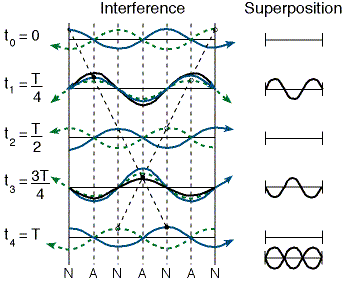Thank you so much!!!!! for the three answers, gosh I really need to pay more attention when I do the papers I did not see the word "visible" until now.You apply v=f(lamda) to find the frequency. You know the wavelength of the visible spectrum ranges from 400nm to 700nm, and that the velocity of electromagnetic waves is 3x10^8.
So 3x10^8=400x10^-9(f)
The f turns out to be 7.5x10^14 Hz. Hence, the order of frequency is 10^14 Hz(C).
-
We need your support!
We are currently struggling to cover the operational costs of Xtremepapers, as a result we might have to shut this website down. Please donate if we have helped you and help make a difference in other students' lives!
Click here to Donate Now (View Announcement)
You are using an out of date browser. It may not display this or other websites correctly.
You should upgrade or use an alternative browser.
You should upgrade or use an alternative browser.
Physics: Post your doubts here!
- Thread starter XPFMember
- Start date
- Messages
- 300
- Reaction score
- 138
- Points
- 53
Your welcome.Thank you so much!!!!! for the three answers, gosh I really need to pay more attention when I do the papers I did not see the word "visible" until now.
- Messages
- 41
- Reaction score
- 19
- Points
- 18
How is everyone so good at physics? I am retaking and still struggling to get a C  .
.
- Messages
- 310
- Reaction score
- 125
- Points
- 53
Thanks alot mann!!Q22. The gradient of displacement-time graph is velocity, so when the gradient is zero the velocity and thus KE are also zero.
The gradient is zero at time = 0, 0.5T, T, 1.5T and 2T
So the KE must be zero at those time coordinates too, only graph D shows this.
Q14. F is the force provided by each beam.
They act towards the hinge like this:
View attachment 64089
The system is in equilibrium, the vertical components = the weight and the horizontal components cancel out.
Vertical component of one beam = Fsin(50)
Total upward forces = 2Fsin(50)
2Fsin(50) = 4 x 10^4
solving for F gives F = 2.6 x 10^4 (A)
Q10.
View attachment 64090
ma = force in direction of motion - opposing force
for block M:
Ma = Mg- T
for block m:
ma = T - mg
Add equation 2 to 1:
Ma + ma = Mg- mg
Solving for a gives B as the answer.
Q37.
View attachment 64091
Use KCL (I flowing into = I flowing out of a junction) to find the currents in the resistors.
Use KVL (EMFs = PDs across a closed loop) to find R.
EMF = PD
12 = (4)(0.5) + (1)(R) + (1.5)(R)
10 = 2.5R
4 = R (B).
Q6. The sandbag was in motion in the balloon, meaning that it's initial velocity when dropped is 3m/s upwards.
It will have a parabolic motion while under acceleration of gravity.
The displacement of the bag during the 5 seconds will be the distance between its starting position and the ground, which is the height of the balloon when it was released.
S = ut + 0.5at^2
S = (-3)(5) + 0.5(9.81)(5)^2
S = 107.625 (B)
Note that the initial velocity and acceleration are in opposite directions.
- Messages
- 41
- Reaction score
- 19
- Points
- 18
Don't assume genderThanks alot mann!!
- Messages
- 41
- Reaction score
- 19
- Points
- 18
p.d. across P = p.d. across R38th question, I'm slightly confused. Can someone help?
So P/Q = R/S
thank you!p.d. across P = p.d. across R
So P/Q = R/S
- Messages
- 884
- Reaction score
- 449
- Points
- 73
- Messages
- 310
- Reaction score
- 125
- Points
- 53
is it B?
- Messages
- 884
- Reaction score
- 449
- Points
- 73
Ais it B?
- Messages
- 310
- Reaction score
- 125
- Points
- 53
huh im confused too now..
- Messages
- 41
- Reaction score
- 19
- Points
- 18
Length of 1 turn is pi*D. Length of n turns is pi*D*N. Cross section area = pi*d^2/4.
- Messages
- 884
- Reaction score
- 449
- Points
- 73
Shouldn't the 2 resistances be added?Length of 1 turn is pi*D. Length of n turns is pi*D*N. Cross section area = pi*d^2/4.
- Messages
- 310
- Reaction score
- 125
- Points
- 53
no as the resistance is only from copper wire due to its length and areaShouldn't the 2 resistances be added?
- Messages
- 310
- Reaction score
- 125
- Points
- 53
- Messages
- 41
- Reaction score
- 19
- Points
- 18
a = -F/m. s = 100. v = 0.
v^2 = u^2 + 2as
u = sqrt(v^2 - 2as) = sqrt(200F/m)
When u = sqrt(200F/m), a = -0.8F/m and v = 0,
v^2 = u^2 + 2as, s = (v^2 - u^2)/2a
s = - sqrt(200F/m)^2/(-0.8*2F/m) = (200F/m)/(1.6F/m) = 125.
- Messages
- 884
- Reaction score
- 449
- Points
- 73
- Messages
- 41
- Reaction score
- 19
- Points
- 18
Waves are in phase. Which means that their path difference is 0. Which means that their displacement is same. So the answer is C.
When the ratio is -1, their displacements are in opposite direction. This means that when the meet at a point, their resultant displacement is 0. This means that it will be a node.
This diagram shows how the superposition of an incident and reflected wave results in a stationary wave.

The waves never have opposite displacements at the antinodes, so it can't be A.


